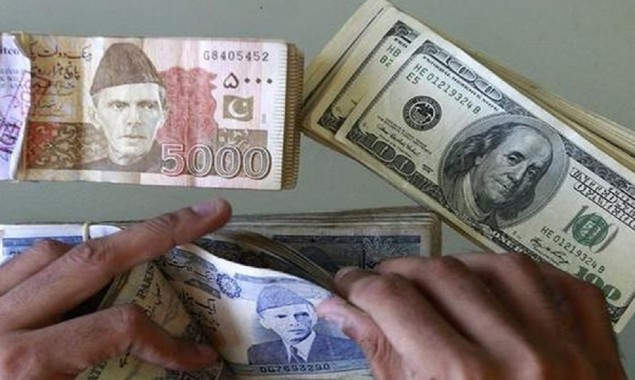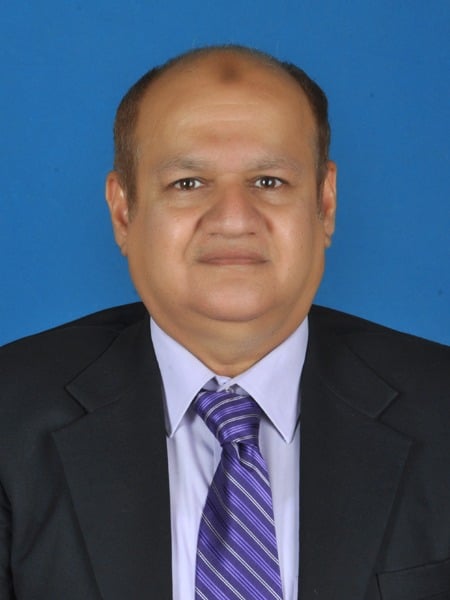
rupee
ISLAMABAD: The revival of economic activities domestically has surged import bill, mainly due to an increase in the prices of raw materials for consumer and capital goods, especially during the last three months.
The substantial rise in the international commodity prices is the major reason for the increase in import bill, which has put pressure on the Pakistani rupee. Further, the changing geo-political situation is also building pressure on domestic production and the forex market.
According to a monthly Economic Update and Outlook report for September issued by the Finance Division, the government’s pro-growth initiatives, as well as the building of strategic reserves, particularly in the food sector, will help the domestic economy ensure adequate supply.
Further, measures taken by the government to enhance exports’ and the ongoing workers’ remittances performance will definitely mitigate the associated risks.
The report said that the economy is currently on a higher growth path. For the long-term enhancement and sustainability of economic growth, it is important that it is driven by the expansion of domestic production. The value-added creation generates income that can be spent on consumption and investment. Attaining a sustainable higher growth path requires a much larger proportion of the value-added to be directed towards the gross fixed capital formation, instead of consumption.
This can be managed by appropriate long-term structural policies, which are being implemented by the government, it said.
In the short-term, sustainability of the current growth requires that the trade deficit remains manageable. In this regard, import dynamics are being closely monitored. Exports can benefit from the current domestic and foreign economic dynamism. It is mentionable that inflation in some of Pakistan’s main export markets is rising significantly. However, domestic inflation is expected to decline.
Maintaining REER [Real Effective Exchange Rate] at the current level, the need for depreciation of the rupee exchange rate is reduced significantly. The government policies for export promotion will also anchor the external sector.
The global economy expanded for the 14th straight month in August; however, the rate of expansion remained slow, might be due to the spread of Delta variant in some countries.
After rising in nine of the previous 10 months, the energy prices decreased 2.1 per cent in August 2021, non-energy prices fell 1 per cent, while the prices of agriculture commodities and fertilisers increased 0.6 per cent and 3 per cent, respectively.
Real Sector: According to the Cotton Crop Assessment Committee, the overall cotton production will reach 8.5 million bales during FY22, showing an increase of 20 per cent, compared with 7.1 million bales last year.
In July 2021, large-scale manufacturing (LSM) witnessed an increase of 2.3 per cent against 8.1 per cent in July 2020. LSM performance remained sluggish temporarily due to the closure of industrial activities during holidays in the wake of Eid-ul-Azha and monsoon rains, which spread over 15 days.
However, the latest upward trend of other high frequency variables such as car production and sales, oil sales, cement dispatches, etc, will boost LSM in the coming months.
The Consumer Price Index (CPI) has been recorded at 8.4 per cent during July-August FY22, compared with 8.7 per cent last year.
Fiscal, monetary and external: The fiscal deficit in terms of GDP was contained at 0.4 per cent (Rs237.8 billion) in July FY22 against 0.5 per cent (Rs211.6 billion) last year. In July FY22, the expenditures under the PSDP grew 72 per cent to Rs 25.3 billion against Rs14.7 billion in the same period of the last year. During the period July 1 to September 3, 2021, broad money (M2) observed contraction of Rs318.5 billion, compared with the contraction of Rs181.3 billion during the same period of the last year.
The current account posted a deficit of $2.3 billion (4.1 per cent of GDP) for July-August FY22 as against the surplus of $838 million (1.8 per cent of GDP) last year. The current account deficit widened due to constantly growing import volume of energy and non-energy commodities such as the Covid-19 vaccines, food, and metals along with a rising trend in its global prices.
The exports on fob grew 35.4 per cent during July-August FY22 and reached $4.6 billion ($3.4 billion last year).
The revival of economic activities across the world has increased the prices of commodities unprecedentedly; thus, putting inflationary pressure globally. The revival of economic activities domestically has increased the imports, mainly due to an increase in the raw materials prices for consumer and capital goods.
In September, MoM inflationary impulses may come from the second round effects of the previous increase in international commodity prices and the currency depreciation.
Inflation rate in September 2021 is expected between 7.5 per cent and 8.4 per cent. Since March 2021, the MEI is on a higher level, compared with the previous months. This is based on favourable movements in the macroeconomic high frequency indicators, which exert strong multiplier effects on the services sector, along with the recovery in Pakistan’s main trading partners. Therefore, the MEI is expected to remain significant with continuation of dynamism in domestic value-added creation.
The exports of goods and services for the next month will remain above $3 billion on account of prudent pro-exports government measures. The remittances are likely to keep its momentum, consequently the current account deficit will be in a manageable range, the report said.
Tax collection has surpassed the target by Rs94 billion in August 2021, as a result of robust measures taken by the Federal Board of Revenue (FBR) and strong domestic economic recovery, setting the strong base for higher tax collection.
Pakistan’s economy is currently on a higher growth path. For long-term sustainable economic growth, the expansion of domestic production stands vital, which is being managed by appropriate structural reforms introduced by the government.
Read More News On
Catch all the Business News, Breaking News Event and Latest News Updates on The BOL News
Download The BOL News App to get the Daily News Update & Follow us on Google News.




